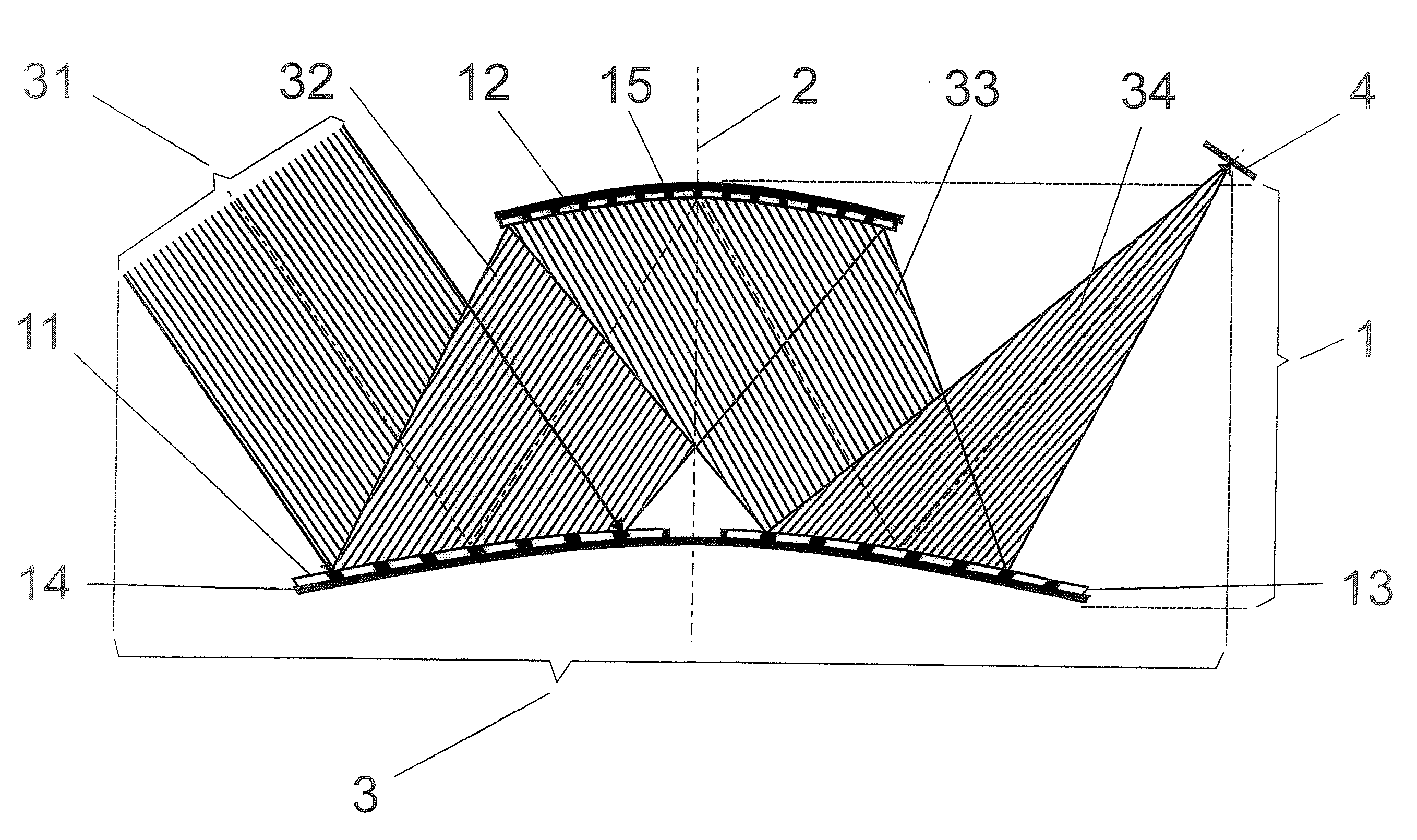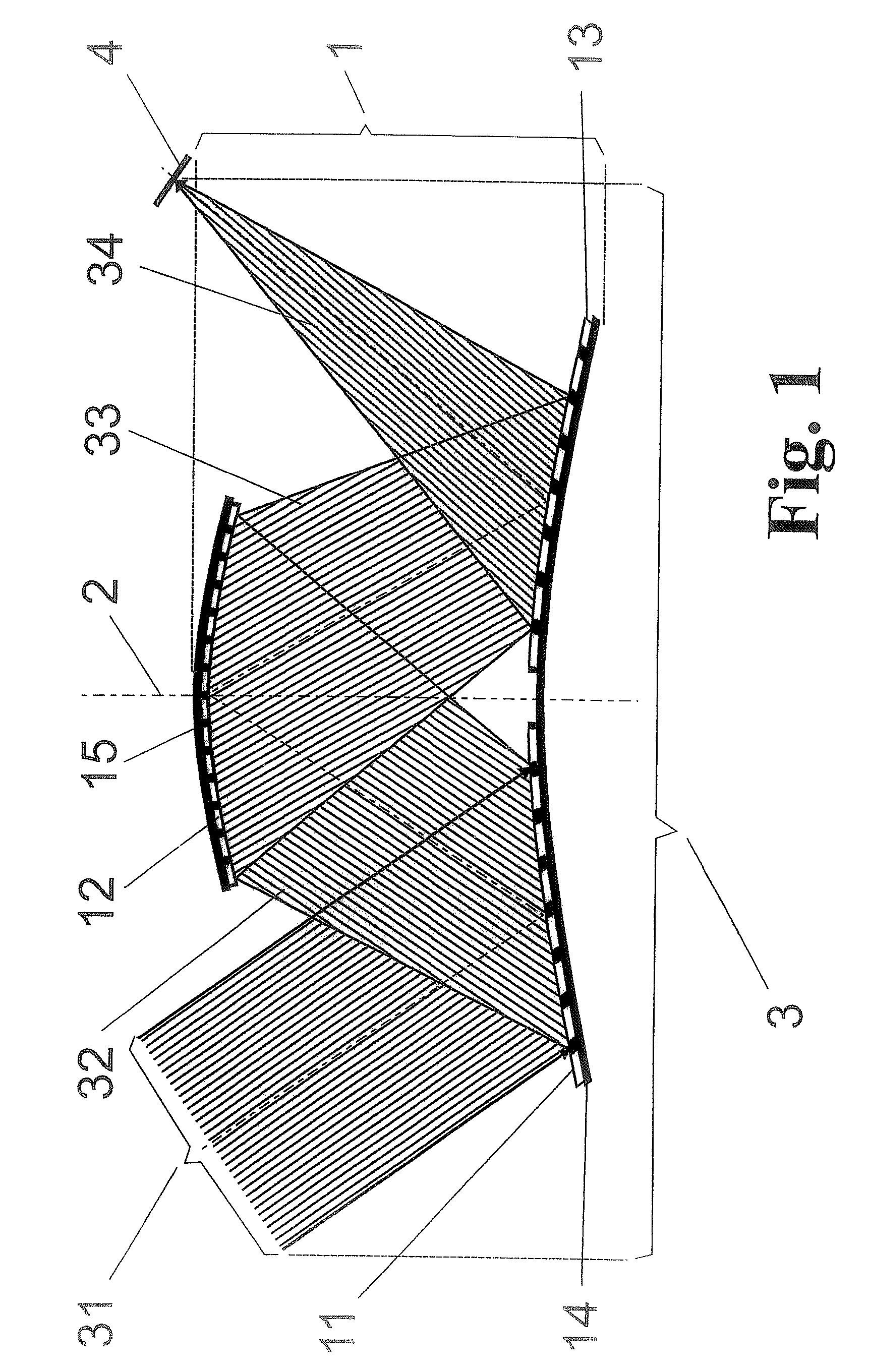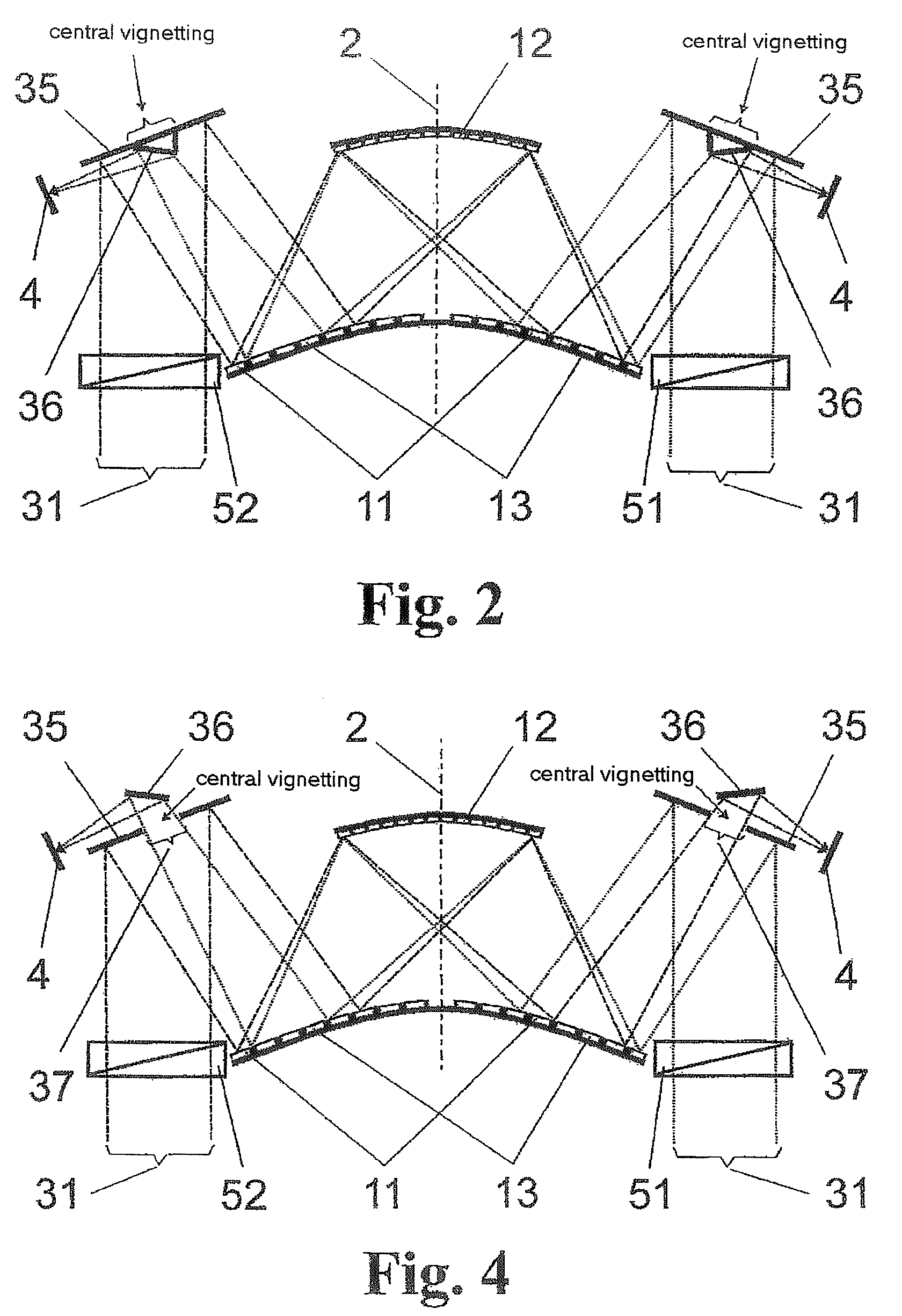Schiefspiegler telescope with three reflecting surfaces
a technology of reflecting surfaces and telescopes, applied in telescopes, microscopes, mountings, etc., can solve the problems of unsolved increase in adjustment expenditure, unresolved adjustment of mirrors and angular settings, and central vignetting contrast reduction, etc., to achieve simple adjustment of reflecting surfaces and simple construction
- Summary
- Abstract
- Description
- Claims
- Application Information
AI Technical Summary
Benefits of technology
Problems solved by technology
Method used
Image
Examples
Embodiment Construction
[0031]As is shown in FIG. 1, the Schiefspiegler telescope according to the invention substantially comprises a mirror arrangement 1 which has an axis of symmetry 2 and in which an off-axis beam bundle 3 extends from an input beam bundle 31 along a plane (in this instance, the drawing plane) through the axis of symmetry 2 for imaging on a receiver 4. The off-axis beam bundle 3 uses three reflecting surfaces, a primary reflecting surface 11, a secondary reflecting surface 12, and a tertiary reflecting surface 13. The primary reflecting surface 11 and tertiary reflecting surface 13 lie on the same carrier surface 14 of the mirror arrangement 1 symmetric to the axis of symmetry 2.
[0032]Therefore, the mirror arrangement 1 comprises aspheres which are curved in the same direction along the axis of symmetry 2. The larger carrier surface 14 carries the convex primary reflecting surface 11 and the tertiary reflecting surface 13. The smaller carrier surface 15 located above the latter has the...
PUM
 Login to View More
Login to View More Abstract
Description
Claims
Application Information
 Login to View More
Login to View More - R&D
- Intellectual Property
- Life Sciences
- Materials
- Tech Scout
- Unparalleled Data Quality
- Higher Quality Content
- 60% Fewer Hallucinations
Browse by: Latest US Patents, China's latest patents, Technical Efficacy Thesaurus, Application Domain, Technology Topic, Popular Technical Reports.
© 2025 PatSnap. All rights reserved.Legal|Privacy policy|Modern Slavery Act Transparency Statement|Sitemap|About US| Contact US: help@patsnap.com



